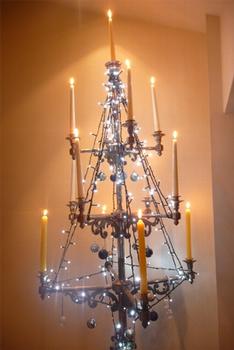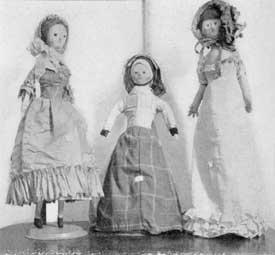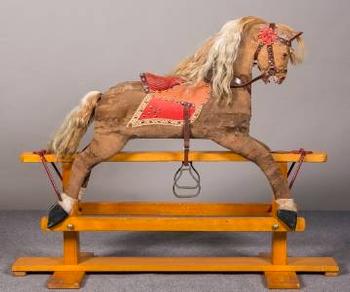Antiques Magazine Archive, November 2014
Christmas
Winter crept up on us slowly, once Halloween had come and gone, it was only a matter of time before we were celebrating Guy Fawkes and feeling a temperature drop. And now here we are in December, with only a few weeks until the Christmas holiday.
You may be one of those people that leave things to the very last minute and you don't want to be reminded of Yuletide's imminent arrival. You may be a person who has it all done 6 months before, and if you are, then I envy you greatly.
If you're wondering what to buy anyone this Christmas and you're stuck for ideas, then do take a look at www.antiques.co.uk where there's plenty to give you something to think about.
Christmas Gifts where the past makes the perfect present
Lalique – a unique Christmas gift
by Amy Lugten
Christmas is a time when department stores are running rampant, peddling Christmas items that are sometimes very good quality, but often are a dime-a-dozen. Antiques.co.uk lists many wonderful and rare items, a few of these coming from the famous French design house of Lalique.
Lalique lived in two ages – the pre-industrial age, when things were a little simpler, and the twentieth century, when phones, electricity, and cars began to rule the world. A celebrated jeweler, then a renowned glassmaker, Lalique went from small artisanal production to factory production without compromising on taste and quality, and remained a market leader. He is most probably recognised for his stellar Art-Deco jewellery and glass pieces, which I first got a taste for in the early 1990s television show ‘Lovejoy’.
But somehow that quintessential Lalique quality remains in all the pieces, despite moving to larger production. It is a rare name that makes exclusive products, eternally interesting. On the website, we have a very unique Great War Cross Brooch, produced to commemorate the muddy, dirty heroes of the Western Front in 1915. On Christmas Day, some soldiers might get some leave, respite, letters, or even presents from home. It is a reminder that, in this year of the centenary of the beginning of the First World War, art and culture remain crucial to who were are. You can find it here (http://antiques.co.uk/antique/Lalique-Great-War-cross-brooch).
The next piece dates from near the same period, and is another wonderful example of Lalique craft, and his gift for perceiving what the market wanted, and fulfilling that desire in a unique way. The ‘Lalique for Fioret’ pendant signifies the designs made by Lalique for the Fioret perfume company. This pendant has a dancing Bacchante, reveling near a tree and flailing a ribbon in gay celebration. Perhaps a gift for a loved one, or one who loves unique jewellery (http://antiques.co.uk/antique/Lalique-for-Fioret-pendant).
Lastly, but not least, we have a late Lalique brooch from the 1970s or 1980s. It is a turtle, with a metal clasp, with semi-opaque glass that reflects the light going through it. It is of lovely design taste, but quite heavy, and so requires coats or heavier clothing – perfect for a winter time gathering, and perfect at Christmas. Why not be the most interesting guest at your dinner party, and dress to impress with this highly interesting piece (http://antiques.co.uk/antique/Lalique-turtle-brooch).
May your Christmas be lovely, and stay tuned for more pre-Christmas news!
Amy
Toys - Georgian period (18th century)
Play is an important part of every child's life and they were as important in the 18th century as they are to children today. Naturally, they were nowhere near as sophisticated as the ones that can be bought now, and there was more emphasis on a child's use of his/her imagination. This is something that, somehow, we seem to have lost touch with. See more on www.antiques.co.uk today
For a long time parents made their children's toys by hand, however the 18th century saw an increase in the manufacture of toys and this meant there was plenty of choice and a better variety of toys available. Children could choose between hobby horses, miniature animals and simple wooden dolls.
There were cheaper ones for those that couldn't afford anything more expensive with simpler, but less robust materials, such as paper mache. Dolls, small houses and soldiers were also made out of paper, they could be cut up and played with by children and would offer hours of entertainment. Cut out dolls were popular for many years, as late as the sixties and early seventies, and they may well be descendants of the Georgian variety.
Toy theatres, spinning toys and skipping ropes, were popular and other simpler outdoor games such as hopscotch.
Toys - Victorian Period (19th century)
As you can imagine and as we've seen in previous blogs, the 19th century brought with it sweeping changes, most of them due to the industrial revolution. This brought more sophisticated manufacturing techniques. The railways meant that goods and services were delivered quicker than in the past and sophisticated factories created goods that were perhaps less imaginative than those made by hand, but it also meant that a far wider audience could indulge in modern technology.
This included toys, and factory made ones included toys made of a variety of different and more robust materials, such as tin and wood. Train sets, clockwork operated toys, rocking horses, dolls houses and tea sets were available for those that could afford it. Again, as before, poorer families made do with toys made of cheaper materials, such as paper, metal or wood. It's likely that they also spent a lot of their time playing with homemade toys. Clothes peg dolls and toy boats made from a piece of wood were imaginative ways of creating toys out of materials that were close to hand. Rope could be used as a skipping rope, or a ball could be made out of some old sack stuffed with straw.








